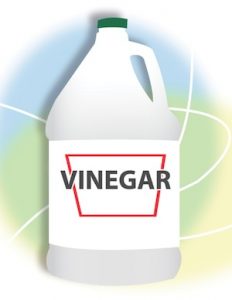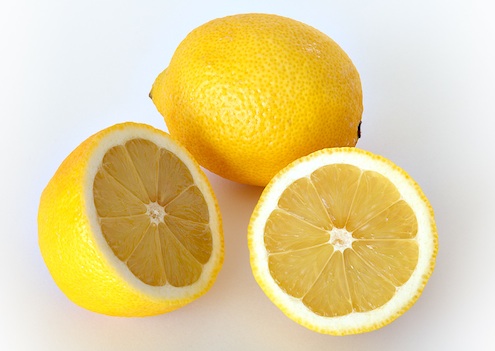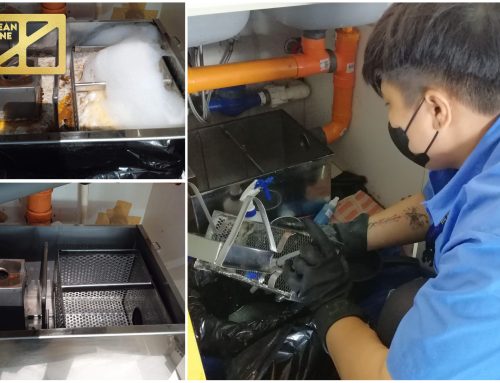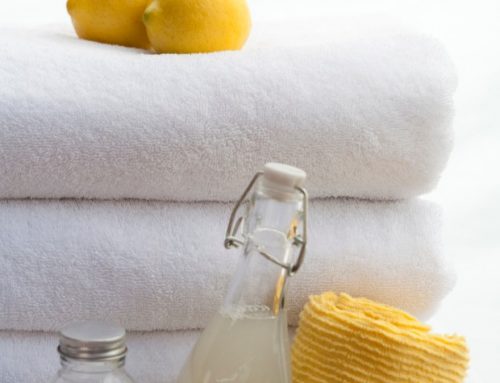
Cleaning green is becoming more important to many people, especially those with allergies, sensitive pets, or children. When we were adopted by our Amazon parrot, for instance, we were forced to reevaluate all of our cleaning supplies to ensure that they were ‘bird-friendly’ (birds are extraordinarily sensitive to chemicals, particularly airborne aerosols). The bottom line is that we now eschew many common chemical cleansers in favor of a variety of techniques based around commonly available household goods.
For most people, environmentally friendly cleaning alternatives are just steps away, within arm’s reach even, hidden behind cupboards or under the sink. Key weapons in your green cleaning arsenal are white vinegar, lemons and lemon juice, baking soda, salt and distilled water. Add an assortment of empty spray bottles, some microfiber cleaning cloths, an old toothbrush and some crumpled-up newspaper, and you’re well on your way to having a clean and green home!
 Perhaps my favorite cleaner is white vinegar, an excellent all-purpose cleanser, degreaser, and sanitizer. Vinegar also inhibits the growth of mold and mildew (a study by Good Housekeeping found that a 5% solution of vinegar is 90% effective against mold and 99.9% effective against bacteria). I use a spray bottle filled with 1/4 white vinegar and 3/4 tap water to clean virtually every surface in my home. You can use the same solution to clean outdoor fabrics and furnishings, too. Spray the area first with the vinegar solution, then wipe it down with a microfiber cloth soaked in plain water (use distilled water on painted surfaces). After cleaning windows or other glass surfaces, wipe with crumpled newspaper to guarantee a streak-free shine.
Perhaps my favorite cleaner is white vinegar, an excellent all-purpose cleanser, degreaser, and sanitizer. Vinegar also inhibits the growth of mold and mildew (a study by Good Housekeeping found that a 5% solution of vinegar is 90% effective against mold and 99.9% effective against bacteria). I use a spray bottle filled with 1/4 white vinegar and 3/4 tap water to clean virtually every surface in my home. You can use the same solution to clean outdoor fabrics and furnishings, too. Spray the area first with the vinegar solution, then wipe it down with a microfiber cloth soaked in plain water (use distilled water on painted surfaces). After cleaning windows or other glass surfaces, wipe with crumpled newspaper to guarantee a streak-free shine.
When it comes to tougher cleaning jobs—such as garbage cans, wooden cutting boards, and sinks—I bring baking soda to the party, sprinkling a generous amount of over the surface and then spraying with 100% vinegar. Let sit until the foaming action stops before lightly scrubbing to remove any stains.
A mixture of baking soda and vinegar will actually unblock clogged sinks. For best results, clear any standing water and pour about 1/2 cup of baking soda into the drain followed by a full cup of vinegar. Let sit until the foaming subsides and repeat as necessary until the drain runs clear.
Vinegar removes scale from fixtures and appliances. Spray or wipe on 100% vinegar, let stand for a few minutes, then rinse or wipe clean with water. For stubborn scale, use an old toothbrush to lightly scrub the surface before rinsing. To clean and de-scale coffee makers, fill the water reservoir 1/2 to 3/4-full with vinegar and run a normal brewing cycle. Follow up by running two cycles using with distilled water.

Lemons and lemon juice also make wonderful cleansers and deodorizers. To remove soap scum on shower doors and tiles, spray the surface with lemon juice or rub down with 1/2 of a cut lemon (wipe or rinse with plain water). To clean a microwave, cut up a lemon and place it in a bowl of water; microwave on high for two minutes, allow the steam to condense inside, and wipe down with a clean cloth. Ensure that garbage disposals smell fresh by putting lemon rinds in the disposal and running hot water through the unit.
Lemon juice combined with common table salt is a great all-purpose metal polish. Simply apply a paste of the lemon juice and salt to an old toothbrush and scrub to remove tarnish and rust from copper, brass, or stainless steel. The same paste will remove most food stains from plastic bowls or storage containers—rub the stains with the paste, let sit overnight, then lightly scrub and rinse.





Leave A Comment